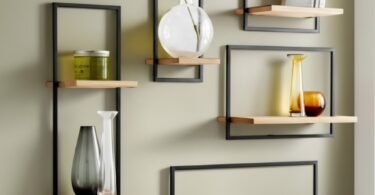The Journey Through Time: How Fountains Evolved From Necessity to Beauty
When I think about fountains, my mind immediately goes to that gorgeous three-tiered masterpiece in Central Park or the playful jets of water kids run through during summer. But fountains weren’t always about beauty and fun. These water features have been through quite the transformation over thousands of years, and honestly, their story is way more interesting than you’d expect.
Picture this: you’re living in ancient Rome around 100 AD. There’s no turning a faucet handle to get fresh water. No corner store to grab a bottle of Aquafina. Your local fountain wasn’t just pretty to look at – it was your lifeline. These early fountains served dual purposes that were both practical and, let’s face it, pretty smart for their time. The Romans figured out how to make their water distribution systems beautiful while they were at it. Why settle for ugly when you can have gorgeous AND functional?
The engineering behind these ancient fountains still blows my mind today. We’re talking about civilizations that built gravity-fed systems without modern pumps or electricity. They carved intricate designs into stone, creating works of art that happened to dispense clean drinking water. The Trevi Fountain in Rome, which still draws millions of visitors today, sits on the endpoint of an ancient aqueduct that’s been bringing fresh water to the city for over 2,000 years. That’s some serious staying power.
What fascinates me most about this evolution is how gradually the shift happened. It wasn’t like someone woke up one day and said, “You know what? Let’s stop using fountains for water and just make them pretty.” The change crept in slowly as cities developed better water infrastructure. Public water systems improved, indoor plumbing became more common, and suddenly fountains found themselves with a bit of an identity crisis.
But here’s where it gets interesting – instead of disappearing into history, fountains reinvented themselves completely. They became symbols of wealth, power, and artistic achievement. Kings and nobles started commissioning elaborate fountain displays for their palaces and gardens. The more ornate and dramatic your fountain, the more impressive your status. We humans have always loved showing off, and fountains became the perfect way to do it with style.
The transformation didn’t stop there. As societies became more democratic and public spaces more important, fountains found their new calling as centerpieces for parks, town squares, and civic buildings. They became gathering places where people could meet, children could play, and communities could come together. That practical Roman fountain had evolved into something that fed the soul instead of just the body.

Modern Fountain Culture: When Pretty Beats Practical Every Time
Fast forward to today, and we’ve completely flipped the script on fountains. Walk through any modern city, and you’ll see what I mean. That massive fountain shooting water 50 feet into the air in downtown? Nobody’s bringing their water bottles to fill up there. The dancing fountain show at the mall with colored lights and music synchronized to pop songs? Pure entertainment, baby.
This shift reflects something deeper about how we live now. We’ve solved the basic problem of water access (at least in developed countries), so we’re free to focus on the emotional and aesthetic benefits that water features bring to our spaces. And boy, do they deliver on that front. There’s something almost magical about the sight and sound of moving water that just hits different from any other decorative element.
I’ve noticed this transformation most clearly in how cities use fountains for placemaking. That’s a fancy urban planning term, but it basically means creating spaces where people actually want to hang out. A well-designed fountain can turn a boring concrete plaza into a destination. Kids gravitate toward them like magnets. Adults find themselves sitting on the edges, eating lunch or just taking a breather from their busy days.
The technology behind modern fountains would absolutely boggle the minds of those ancient Roman engineers. We’ve got fountains that respond to music, change colors with LED lighting systems, and even react to people’s movements with sensors. Some of the newer installations I’ve seen look more like art exhibits than traditional fountains. The Crown Fountain in Chicago’s Millennium Park projects video faces of local residents that appear to “spit” water at visitors. It’s weird, wonderful, and completely removed from any practical water needs.
But here’s what I find most interesting about modern fountain culture – we’re using them to solve different problems than our ancestors did. Instead of providing drinking water, today’s fountains tackle issues like urban heat islands, air quality, and mental health. The evaporative cooling effect of a large fountain can drop the temperature in surrounding areas by several degrees. The negative ions produced by moving water can actually improve air quality and boost people’s moods. Science has caught up with what we’ve always felt instinctively about being near water.
The commercial side of modern fountains is pretty wild too. Shopping centers spend millions on elaborate water features because they know it keeps people in their spaces longer. Hotels compete to have the most Instagram-worthy fountain in their lobby. Even office buildings are installing water features in their atriums because studies show it reduces stress and increases employee satisfaction. When pretty water can boost your bottom line, you know the transformation from practical to aesthetic is complete.

Finding Inspiration in Public Spaces: Why Fountains Make Us Dream
You know that feeling when you’re walking through a beautiful park or plaza and suddenly stop dead in your tracks because there’s this absolutely stunning fountain that just demands your attention? I’m convinced that’s the moment when most of us first start thinking about bringing water features into our own spaces. There’s something about encountering a really well-designed fountain that plants a seed in your brain that just won’t quit growing.
I remember the first time this happened to me. I was visiting Savannah, Georgia, and stumbled across one of those classic Southern squares with a fountain surrounded by Spanish moss-draped oak trees. The whole scene was so peaceful and elegant that I literally stood there for 20 minutes just watching the water and listening to the gentle splashing sounds. Right then and there, I knew I wanted that feeling in my own home somehow.
Public fountains are basically free design education if you pay attention to them. Every city park, museum courtyard, and hotel lobby with a water feature is teaching us something about scale, proportion, materials, and the psychology of water placement. I’ve started taking photos of fountains I love, not because I’m trying to copy them exactly, but because I want to remember what made them work so well in their spaces.
The variety you see in public fountain design is absolutely mind-boggling. Classical tiered fountains with cherubs and flowing robes. Sleek modern installations that look like abstract sculptures. Interactive splash pads where kids can run and play. Dramatic vertical jets that shoot up from ground level. Each style creates a completely different mood and serves different purposes, but they all share that magical ability to transform a space just by adding moving water.
What’s really cool is how different cultures approach fountain design. Japanese fountains tend to emphasize simplicity and natural materials, creating spaces for quiet contemplation. Italian fountains go big on drama and grandeur, making bold statements that command attention. Middle Eastern fountains often incorporate geometric patterns and intricate tilework that creates mesmerizing visual effects. American fountains, true to form, tend to embrace both cutting-edge technology and supersized spectacle.
The psychology behind why public fountains inspire us to want our own is fascinating. When we see these features in prestigious locations like five-star hotels, upscale shopping centers, and beautiful parks, our brains automatically associate them with luxury, success, and the good life. We start thinking, “If I had something like this in my home, I’d feel that same sense of elegance and tranquility every day.” It’s aspirational design at its finest.
But inspiration goes beyond just wanting to copy what we see. Good public fountain design teaches us about the power of focal points, the importance of proportion, and how water sounds can completely change the acoustic environment of a space. These lessons translate directly to home design, even if we’re working with much smaller spaces and budgets. That massive hotel lobby fountain might inspire a small tabletop version that brings the same sense of calm to our living room.

The Magic of Indoor Water Features: Bringing Serenity Home
Let me tell you about the first time I walked into a home with an indoor fountain. My friend had this gorgeous stone wall fountain in her entryway, and the moment I stepped through the front door, I felt my shoulders relax. The soft sound of trickling water immediately signaled to my brain that this was a peaceful, welcoming space. That’s when I really understood the power of bringing water features indoors.
Indoor fountains work their magic on multiple levels, and it’s not just about looking pretty (though they definitely do that too). The sound component is huge. We’re constantly bombarded with harsh noises throughout our day – traffic, construction, neighbors, electronics beeping and buzzing. The gentle, consistent sound of flowing water acts like acoustic white noise, masking those jarring sounds while creating a naturally calming audio backdrop.
There’s actual science behind why we find water sounds so soothing. Our brains are hardwired to associate the sound of flowing water with safety and abundance. For thousands of years, finding a reliable water source meant survival, so that gentle babbling triggers deep relaxation responses in our nervous systems. It’s like having a built-in meditation soundtrack running in your home.
The visual impact of indoor fountains is equally powerful. Water has this amazing ability to catch and reflect light, creating subtle movement and sparkle that draws the eye without being distracting. Unlike a television or busy artwork, a fountain provides just enough visual interest to be engaging without overwhelming your senses. It’s like having a living piece of art that’s constantly changing but never demanding your full attention.
I’ve noticed that indoor fountains also change how people behave in spaces. Guests naturally gravitate toward them, often unconsciously lowering their voices and moving more slowly. There’s something about the presence of flowing water that encourages mindfulness and present-moment awareness. It’s pretty remarkable how one design element can influence the entire energy of a room.
The air quality benefits are another bonus that many people don’t realize. As water moves and evaporates, it releases negative ions into the air. These ions can help neutralize pollutants, reduce dust, and even improve respiratory function. It’s like having a natural air purifier that also happens to be beautiful and relaxing. During dry winter months when heating systems zap humidity from indoor air, a fountain can help maintain more comfortable moisture levels.
The variety of indoor fountain styles means there’s something for every home and personal taste. Wall-mounted fountains save floor space while creating dramatic vertical focal points. Freestanding floor fountains can serve as room dividers or anchor larger spaces. Tabletop fountains bring water’s benefits to smaller areas like bedrooms, home offices, or dining rooms. Each style offers different advantages depending on your space and lifestyle needs.

Navigating the Fountain Marketplace: Options Galore
Walking into the fountain market today feels a bit like being a kid in a candy store – if that candy store was absolutely massive and filled with water features in every size, shape, and style imaginable. The sheer variety available can be both exciting and completely overwhelming. I’ve spent hours browsing online galleries and showroom floors, amazed by the creativity and craftsmanship that goes into modern fountain design.
Floor fountains represent the heavyweight champions of indoor water features. These substantial pieces can range from 3 feet tall to installations that stretch from floor to ceiling. I’ve seen slate tower fountains that look like natural rock formations, sleek metal designs that could double as modern art sculptures, and elaborate multi-tiered models that channel classical European garden aesthetics. The key with floor fountains is having enough space to let them shine without overwhelming your room.
Wall fountains offer a brilliant solution for people who love the idea of water features but don’t have tons of floor space to work with. These mount directly to your wall and can create stunning focal points without eating up valuable square footage. Some of my favorites include natural stone panels with water cascading down textured surfaces, contemporary metal designs with geometric patterns, and even living wall combinations that incorporate plants with flowing water.
Tabletop fountains might be small, but they pack a serious punch in terms of impact. These compact water features can transform any surface into a serene focal point. I’ve seen everything from miniature zen gardens with bamboo spouts to crystal formations with LED lighting that creates mesmerizing color effects. The beauty of tabletop fountains is their versatility – you can move them around, try them in different rooms, and experiment with placement until you find the perfect spot.
The materials used in fountain construction have exploded beyond traditional stone and concrete. Modern fountains incorporate copper, stainless steel, glass, ceramic, resin composites, and even recycled materials. Each material brings its own aesthetic qualities and maintenance considerations. Copper develops a beautiful patina over time, stainless steel offers sleek contemporary appeal, while natural stone provides timeless elegance that works with almost any decor style.
Size considerations go way beyond just measuring your available space. Larger fountains generally produce more sound and visual impact, but they also require more maintenance and use more water. Smaller fountains might be easier to manage but could get lost in a large room. The sweet spot varies for every home and personal preference, but I’ve found that slightly oversizing rather than undersizing tends to create more satisfying results.
The technology integration in modern fountains would blow the minds of fountain makers from just 20 years ago. LED lighting systems can cycle through millions of colors, creating different moods for different times of day or seasons. Smart pumps adjust water flow automatically and can be controlled via smartphone apps. Some high-end models even include built-in speakers that synchronize water movement with your favorite music playlists.
Making the Right Choice: Practical Considerations for Fountain Selection
Choosing the perfect fountain for your home isn’t just about falling in love with a pretty design (though that’s definitely part of the fun). After helping friends navigate this process and going through it myself, I’ve learned that the most successful fountain installations happen when you balance your aesthetic dreams with practical realities. Trust me, a little planning upfront saves a lot of headaches down the road.
Room size and ceiling height are probably the most overlooked factors in fountain selection. I’ve seen people fall in love with massive floor fountains that looked stunning in a showroom but completely dominated their living room once they got it home. A good rule of thumb is that your fountain should complement your space, not compete with it for attention. In smaller rooms, wall-mounted or tabletop options often provide better proportion and visual balance.
The existing furniture and decor in your space should definitely influence your fountain choice. A sleek modern fountain can look completely out of place in a traditional Victorian-style room, while an ornate classical fountain might clash with minimalist contemporary furniture. The good news is that water features are surprisingly versatile and can bridge different design styles when chosen thoughtfully. Natural materials like stone or wood tend to work well across various decorating approaches.
Placement considerations go way beyond just finding an available spot. You’ll want to think about electrical outlets for the pump, water access for refilling, and how the fountain will interact with foot traffic patterns in your room. I learned this the hard way when I placed a tabletop fountain on a side table that turned out to be right in the path people naturally took to reach the couch. It looked great but created constant navigation issues.
Maintenance requirements vary dramatically between different fountain types and sizes. Larger fountains with more complex water circulation systems generally need more attention, while smaller self-contained units can be surprisingly low-maintenance. Consider your lifestyle honestly – if you travel frequently or prefer low-maintenance home features, a simple tabletop fountain with easy-access components might be a better choice than an elaborate floor model.
Water quality and climate factors in your area can affect fountain performance and maintenance needs. Hard water areas might require more frequent cleaning to prevent mineral buildup, while very dry climates could mean more frequent refilling due to evaporation. Some fountain materials handle temperature fluctuations better than others, which could matter if you live in an area with significant seasonal changes or have rooms that get very hot or cold.
Budget considerations extend beyond just the initial purchase price. Factor in installation costs if you’re choosing a wall-mounted or built-in fountain, ongoing electricity costs for the pump and any lighting features, and potential maintenance expenses over time. A slightly more expensive fountain with better construction and easier maintenance access often proves more economical in the long run than a cheaper option that requires constant attention.
The sound level your fountain produces is another practical factor that’s easy to overlook when you’re shopping. What sounds perfectly pleasant in a showroom might feel too loud or too quiet in your actual living space. Most quality fountain retailers can give you sound level estimates, and many offer return policies that let you try fountains at home before committing. Don’t underestimate how much the acoustic environment matters to your daily enjoyment of the feature.
The Perfect Finishing Touch: Why Fountains Complete Your Home
After diving deep into the world of indoor fountains, I keep coming back to one simple truth – these water features have an almost magical ability to tie a room together in ways that few other design elements can match. When you get the right fountain in the right space, it doesn’t just sit there looking pretty. It transforms the entire energy and feel of your home, creating that intangible quality that designers call “atmosphere” but the rest of us just know as “this place feels amazing.”
The concept of fountains as finishing touches makes perfect sense when you think about how interior design actually works. You start with the big pieces – furniture, flooring, wall colors – and then layer in accessories and details that bring personality and warmth to the space. A well-chosen fountain operates at this finishing level, but with way more impact than typical accessories. It engages multiple senses simultaneously and creates a focal point that feels both luxurious and naturally calming.
What I find most compelling about fountains as home features is their ability to create what I call “everyday luxury.” You don’t need a mansion or unlimited budget to bring that resort-like feeling of tranquility into your daily life. A thoughtfully placed fountain can make your morning coffee routine feel like a spa experience, turn your home office into a peaceful retreat, or transform your bedroom into a sanctuary that actually helps you unwind after stressful days.
The sensory richness that fountains bring to interior spaces is unmatched by any other single design element. The gentle sound masks household noises and creates natural white noise that many people find helps with focus and relaxation. The subtle movement and light reflection add visual interest without being distracting. The increased humidity and negative ions can actually make indoor air feel fresher and more comfortable. It’s like getting multiple home improvements rolled into one beautiful package.
I’ve noticed that homes with indoor fountains tend to feel more welcoming and peaceful to guests. There’s something about the presence of flowing water that signals relaxation and hospitality at a subconscious level. People naturally speak more softly and move more slowly around water features, which creates a more intimate and comfortable social atmosphere. It’s interior design psychology at its finest.
The long-term satisfaction factor with fountains seems higher than with most other decorative purchases. While you might get tired of artwork, throw pillows, or even furniture over time, the fundamental appeal of moving water appears to have serious staying power. Maybe it’s because water features engage us on such a primal, instinctual level that the novelty never really wears off. Or maybe it’s because they’re constantly changing – the play of light, the rhythm of water, the subtle variations in sound – so they never become static or boring.
From a practical standpoint, quality indoor fountains also tend to age well and maintain their value. Unlike trendy decor items that can quickly look dated, water features have a timeless quality that transcends specific design movements. A well-made fountain can easily transition through different decorating phases in your home, adapting to new color schemes and furniture arrangements while continuing to provide that same sense of serenity and sophistication.
The variety available today means that finding a fountain that perfectly complements your personal style and home requirements has never been easier. Whether you’re drawn to sleek contemporary designs, rustic natural materials, or classical traditional styles, there are options designed specifically for your aesthetic preferences and space constraints. The key is taking the time to consider all the factors we’ve discussed and choosing a fountain that will bring you joy and relaxation for years to come.








Leave a Comment